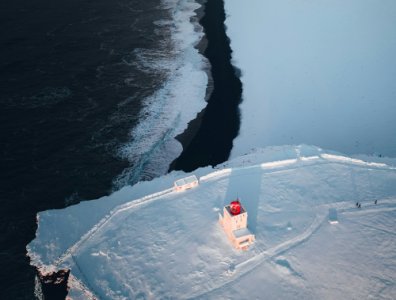Heat below, flight above: How New Zealand is reimagining energy
Kennie Tsui CMInstD and Kiri Hannifin are helping lead Aotearoa’s energy shift – from skies to steam – and shaping a cleaner, smarter future.
New Zealand is emerging as a bold innovator in energy transition, thanks to leaders who are reshaping our relationship with power – both beneath our feet and in our skies.
In two distinct but deeply interwoven domains, Kennie Tsui CMInstD, Chief Executive of the New Zealand Geothermal Association, and Kiri Hannifin, Chief Sustainability and Corporate Affairs Officer at Air New Zealand, spoke at July’s Climate Governance Forum about navigating the technical, strategic and governance challenges of building a decarbonised future.
In July, the Government launched its first draft geothermal strategy with a plan to double the amount of geothermal energy produced for electricity and heating within 15 years.
The Government says the draft strategy aims to unlock the country’s geothermal potential, reinforce its global leadership in geothermal innovation and support the growth of regional and Māori economies.
Today, geothermal accounts for almost 20% of our electricity generation and New Zealand is the fifth largest generator of geothermal in the world.
Describing geothermal energy as a taonga, Tsui pointed to the deep intergenerational knowledge of Māori communities in managing geothermal heat. “We are very lucky,” she said. “We are sitting on top of two volcanic flats . . . known as the Taupō Volcanic Zone.”
Geothermal already plays a major role in New Zealand’s primary energy supply – second only to oil. Yet its contribution to electricity is only part of the story. “People think geothermal is only about electricity,” said Tsui. But, she says, it also enables direct heat use, mineral recovery, microbial science, tourism and local energy supply.
Tsui also challenged the assumption that geothermal is limited to the central North Island. “Geoheat [low-to-medium temperature geothermal] is everywhere – whether you’re at the bottom of the South Island or the top of the North Island.”
One example is Essity’s Kawerau plant. “They’ve started to phase out their natural gas boiler since 2010. In March this year, they became the first tissue plant in the world to run on geothermal heat.
“Next time you pick up toilet paper in a supermarket – it might be geothermal-powered,” she laughed.
While Tsui looks underground, Hannifin looks skyward – with similar ambition.
Aviation is one of the highest emitters of carbon in New Zealand, accounting for about 8-9% of the country’s emissions. Globally, aviation accounts for between 2-3%, but Hannifin points to predictions suggesting that it may increase to a quarter of the world’s emissions by 2050.
Air New Zealand has considered the viability of novel propulsion aircraft as part of its future. Investment cycles for new fleet are long. “It takes many years to develop and certify a new aircraft,” Hannifin said.
“New fleet brought in today could be in service for up to 20 to 30 years, so as we look to replace some of our older turbo prop fleet – for example, sometime in the 2030s – we are assessing whether next generation aircraft are a possibility.”
Air New Zealand is exploring innovative technologies, including battery-electric or hydrogen aircraft, hybrid propulsion and sustainable aviation fuel (SAF). In FY24, Air New Zealand flew with just under 2% SAF – mostly made from used cooking oil.
“SAF is still a developing technology globally and the airline is taking a cautious approach, balancing affordability and sustainability criteria, such as the life cycle savings of SAF and its provenance,” Hannifin said.
The opportunity for novel propulsion aircraft is unusually well-aligned for Aotearoa. “About 60% of our regional flights are under 350 kilometres – within range for these aircraft,” she said. “We’ve also got a really good renewable grid, and an uncomplicated airport network with strong communities who want to decarbonise.”
Hannifin believes this makes New Zealand “one of the best places in the world to trial next-generation aircraft”, and the company has acted accordingly. It was the first commercial airline to sign with Beta Technologies, a US electric aircraft manufacturer.
The first aircraft is set to arrive by boat in Tauranga in October and will be flown under a US Federal Aviation Administration (FAA) licence while being tested from Hamilton.
She was clear that the transition must be deliberate and carefully managed. “We won’t fly [the electric aircraft] commercially until 2027 or 2028. Safety and regulatory support are the drivers of the testing flights and we are taking our time to do it properly. Go slow to go fast is the motto.”
Hannifin sees these emerging aircraft as “the intersection of climate risk, energy transition, national infrastructure and our international competitiveness”.
Globally, airlines have 25 years to decarbonise, she said, “and every per cent of emissions we can save through the use of a more efficient fleet means less reliance on SAF and carbon removals”.
She acknowledged the constraints. “Are there large commercial markets for smaller 19- to 20-seat aircraft? Not so many. Some countries are pulling back from high penetration of regional flying – Norway being one of a few exceptions.”
Air New Zealand is actively working with like-minded carriers to build demand. “Having a strong market is important for airline manufacturers like Boeing and Airbus to invest.”
Both Tsui and Hannifin see their work as intersecting climate risk, infrastructure, energy innovation and leadership. Each acknowledges that the clock is ticking.
Their message is clear: the energy transition is no longer theoretical. It’s practical, urgent and already under way – from carbon-free steam fields in the Waikato region to electric test flights in Hamilton.
As New Zealand accelerates toward a low-emissions future, the energy transition is no longer a distant concept – it’s a strategic imperative for every boardroom. To read more about this, check out Leading the charge: A director’s guide to energy transition, produced by Chapter Zero New Zealand and Dentons.



